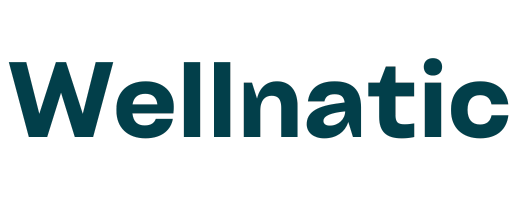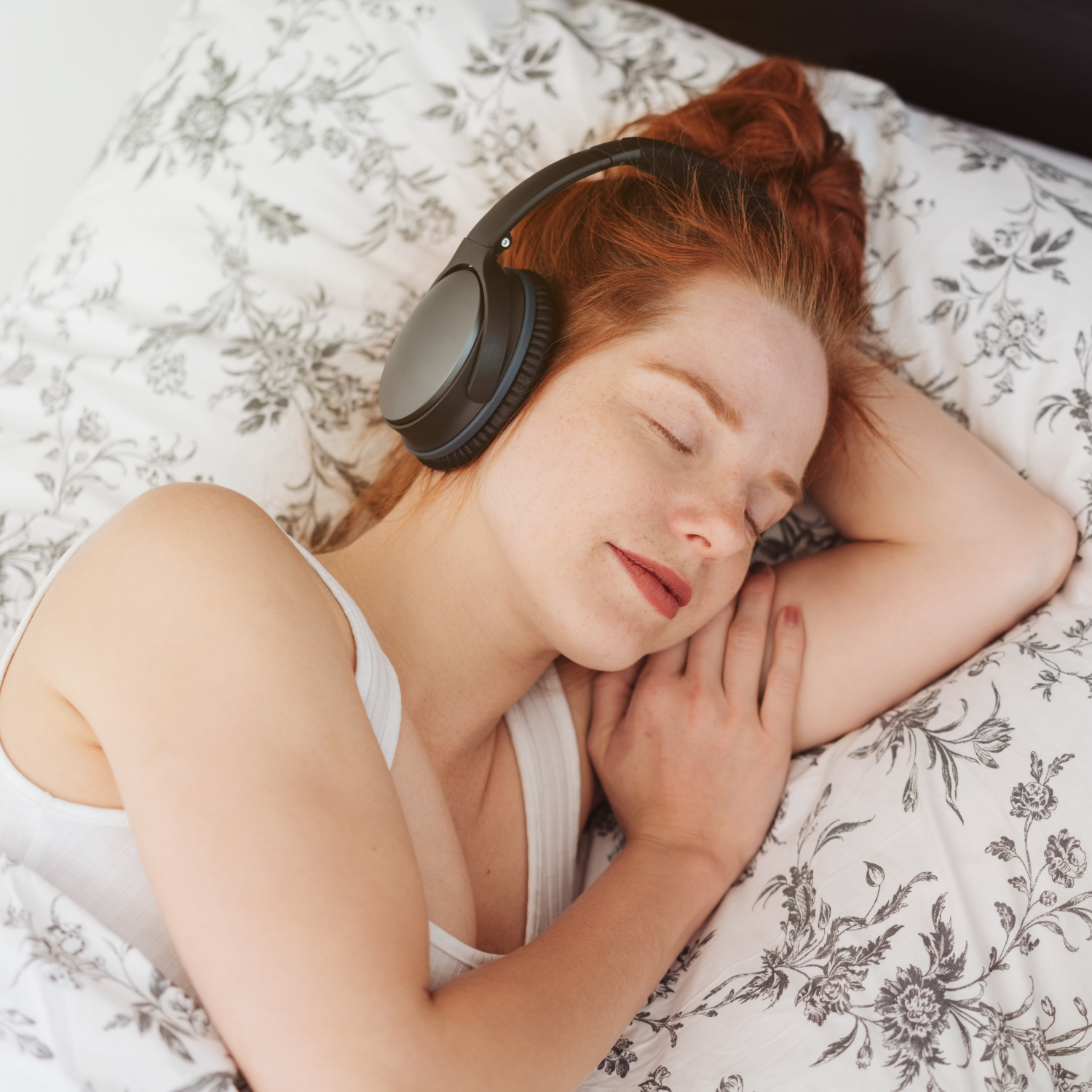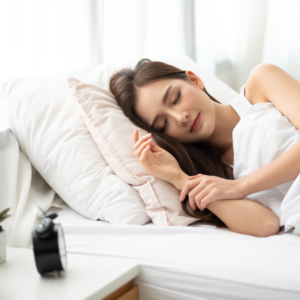Introduction to Sleep and Technology
Sleep is a fundamental aspect of human health, playing a crucial role in maintaining mental and physical well-being. Adequate sleep is essential for cognitive function, emotional regulation, and overall quality of life. Unfortunately, in today’s fast-paced world, many individuals struggle to achieve the recommended seven to nine hours of restful sleep each night. Various factors contribute to this challenge, including stress, poor sleep habits, environmental disturbances, and the pervasive influence of digital devices. As a result, a significant number of people experience sleep disorders, leading to reduced productivity, impaired judgment, and heightened health risks.
In recent years, advancements in technology have begun to address these pressing sleep challenges. From wearable devices that track sleep patterns to smart home systems that create optimal sleeping environments, technology offers innovative solutions aimed at improving sleep quality. These devices provide valuable insights into individual sleep behaviors and can help users identify potential disturbances that may interfere with their nightly rest. Moreover, sleep-enhancing technologies can help regulate factors such as light and noise, creating an atmosphere conducive to a restful night.
It is imperative for individuals to embrace these technological solutions, particularly as the growing prevalence of sleeplessness takes a toll on public health. Incorporating sleep tracking applications, smart alarms, and devices designed to promote relaxation can serve as effective measures to counteract the negative influences on our sleep patterns. By leveraging technology wisely, users may transform their bedtime routine and ultimately nurture their health and well-being.
Wearable Sleep Trackers: Measuring Your Sleep Quality
Wearable sleep trackers, including smartwatches and fitness bands, have become increasingly popular tools for individuals seeking to enhance their sleep quality. These devices are designed to monitor various aspects of sleep, providing users with insights into their sleep patterns and overall restfulness. By utilizing sensors, wearable trackers can measure sleep stages, including light, deep, and REM (rapid eye movement) sleep, offering a comprehensive overview of the user’s sleep cycle.
The data collected by these wearable devices typically includes not only the total duration of sleep but also the efficiency of sleep, which is the ratio of time spent asleep to the time spent in bed. This information allows users to assess how restorative their sleep is. Many trackers also incorporate heart rate and movement sensors, which can further enhance the accuracy of sleep stage analysis. For example, a higher heart rate during sleep may indicate disturbances or stress, prompting users to investigate potential underlying issues affecting their rest.
Moreover, wearable sleep trackers often feature user-friendly interfaces that facilitate the interpretation of sleep data. Many devices sync with mobile applications that provide visual representations of sleep cycles and trends over time. This information can empower users to make informed decisions, such as adjusting their bedtime routines, identifying optimal sleep conditions, and recognizing lifestyle factors that may influence their sleep quality.
By leveraging technology, individuals can analyze their sleep habits more effectively and implement changes based on empirical data. These insights can significantly contribute to achieving better overall sleep quality, leading to improved health and well-being. As awareness of the importance of sleep continues to grow, wearable trackers emerge as valuable tools for anyone looking to harness the power of technology to sleep smarter.
Sleep Apps: Your Personal Sleep Assistant
In the age of technology, sleep applications have emerged as personal assistants dedicated to improving sleep quality and fostering healthier sleep habits. These tools offer a variety of features designed to address common sleep-related concerns, providing users with comprehensive support through their smartphones.
One prominent feature found in many sleep apps is the availability of soothing sleep sounds. These auditory aids often include white noise, nature sounds, and ambient music, all of which are specifically curated to promote relaxation and mask disruptive noises from the environment. Users can customize their auditory experience by choosing sounds that resonate with their personal preferences, making it easier to fall asleep and maintain restful slumber throughout the night.
In addition, several sleep applications incorporate guided meditation and relaxation techniques. Users can access a range of meditation guides tailored to different levels of experience, helping facilitate a mental transition to sleep. Many of these apps provide features such as bedtime stories, breathing exercises, and mindfulness practices aimed at reducing anxiety and stress, which are common culprits of sleep disturbances.
Moreover, sleep journals integrated into these applications allow users to log their sleep patterns, mood, and daily activities. By tracking this information, users can identify correlations between their habits and their quality of sleep. This data-driven approach not only encourages accountability but also empowers users to make informed decisions regarding lifestyle changes that could enhance their overall sleep experience.
As we navigate through the complexities of modern life, sleep apps serve as valuable tools to cultivate effective sleep habits. By utilizing the features these applications offer, individuals can establish a more soothing and structured pre-sleep routine, ultimately leading to better sleep quality and improved overall well-being.
Smart Mattresses and Bedding Solutions
The evolution of sleep technology has marked a significant advancement in the way individuals approach rest and recuperation. Smart mattresses and bedding solutions have emerged as game-changers in promoting enhanced sleep quality. These innovative products incorporate a variety of advanced features designed to optimize comfort and support during the sleep cycle.
One of the key features found in many smart mattresses is temperature control. By using specialized materials or built-in heating and cooling systems, these mattresses can maintain an ideal sleeping temperature. This is particularly beneficial as body temperature plays a crucial role in initiating and sustaining sleep. By regulating warmth, individuals can experience a more restful night’s sleep, reducing the likelihood of waking due to discomfort associated with heat.
Adjustable firmness is another significant benefit offered by smart bedding solutions. With customizable firmness levels, users can easily modify their mattress to suit personal preferences and sleeping styles. This adaptability ensures proper spinal alignment, which is essential for preventing pain and discomfort. It accommodates varying preferences for side, back, or stomach sleeping positions, enabling a tailored sleep experience.
Sleep position tracking technology is increasingly integrated into modern smart mattresses. This feature utilizes sensors to monitor an individual’s sleeping posture and provides feedback on sleep quality. Users can gain insights into their sleep patterns, helping them make necessary adjustments to promote healthier sleep habits. By understanding how position affects restfulness, individuals can enhance their overall sleep experience.
Incorporating these innovative technologies into one’s sleep routine can significantly improve comfort and support. As sleep continues to be recognized as a cornerstone of health and well-being, smart mattresses and bedding solutions stand out as essential tools in the quest for better rest. Harnessing the power of technology in sleep can thus lead to a profound impact on overall quality of life.
Blue Light and Sleep Disruption: The Role of Technology
The pervasive use of digital devices has undeniably altered our daily routines, especially concerning sleep patterns. One significant contributor to sleep disruption is blue light, which is emitted from screens of smartphones, tablets, and computers. Blue light exposure, particularly during the evening hours, can interfere with the body’s natural circadian rhythms, ultimately affecting sleep quality. Research indicates that blue light can inhibit the production of melatonin, a hormone crucial for regulating sleep cycles, which leads to difficulties in falling asleep and maintaining restful sleep throughout the night.
Fortunately, technology has evolved to address these challenges. Many devices now feature night mode settings or blue light filters, which reduce the emission of harmful blue light wavelengths. Night mode alters screen colors to warmer tones, minimizing blue light intensity and its disruptive effects on sleep. This functionality is vital for individuals who find themselves using their devices late into the evening, as it helps reduce the potential negative impact on melatonin production and supports healthier sleep patterns.
In addition to utilizing built-in features, individuals can adopt various screen-time habits to promote better sleep. It is advisable to establish a digital curfew, which involves disconnecting from screens at least an hour before bedtime. Engaging in alternative activities, such as reading a physical book or practicing relaxation techniques, can also serve to enhance sleep quality. Moreover, utilizing apps and software designed to remind users to take breaks from screens can further promote healthier usage and reduce overall blue light exposure.
In conclusion, the relationship between blue light and sleep disruption highlights the need to understand how technology can both hinder and help our sleep quality. By leveraging available options and adopting better habits, individuals can enjoy the benefits of their devices while minimizing their adverse effects on sleep.
Using Technology for Sleep Meditation and Relaxation
In recent years, the integration of technology into sleep meditation practices has provided individuals with innovative solutions to enhance their overall well-being. With the rise of various applications and platforms designed specifically for promoting relaxation, users have easy access to guided meditation techniques and soothing soundscapes that facilitate a peaceful transition into sleep. These digital tools offer customizable experiences that cater to individual preferences and needs.
One of the most prominent resources available for sleep meditation is mobile applications such as Headspace, Calm, and Insight Timer. These applications feature a wide range of guided meditations tailored to different objectives, including anxiety reduction, stress management, and sleep improvement. By utilizing auditory cues, calming music, and expert-led sessions, users are steered towards a tranquil mental state that enhances their ability to fall asleep more easily. The versatility of these platforms allows users to select specific lengths for sessions, enabling them to fit meditation into even the most demanding schedules.
Additionally, various online platforms provide ambient soundscapes and white noise specifically intended to mask disruptive noises and promote tranquility. Natural sounds like rain, ocean waves, or forest ambiance can create an ideal auditory environment conducive to relaxation and sleep. These soundscapes can be integrated with sleep meditation sessions, further elevating the effectiveness of the overall experience. Overall, the combination of guided programs and soothing soundtracks has been shown to significantly reduce anxiety and promote a mindset more favorable for exchanging wakefulness for restfulness.
Ultimately, technology has revolutionized sleep meditation practices, making them more accessible and appealing. By exploring these tools, individuals can discover effective methods to cultivate relaxation and work towards achieving improved sleep hygiene and quality of rest.
Environmental Control: Smart Home Devices for Better Sleep
Creating an optimal sleep environment is essential for ensuring restful nights and rejuvenated mornings. In recent years, smart home technology has emerged as a powerful ally in enhancing the quality of sleep. Various smart devices are designed not only to enhance comfort but also to minimize disturbances, promoting a more conducive atmosphere for rest.
One of the key components in establishing an ideal sleep environment is temperature control. Smart thermostats can automatically adjust the room temperature based on your bedtime routine and preferences. Research suggests that the ideal sleep temperature for most individuals ranges between 60 to 67 degrees Fahrenheit. By utilizing a smart thermostat, users can ensure the bedroom remains cool enough to facilitate deeper sleep cycles. Additionally, many of these devices provide remote access via smartphones, allowing users to set the perfect conditions even when they are away from home.
Light is another crucial factor that influences sleep quality. Smart blackout curtains or shades can be programmed to close automatically as bedtime approaches, blocking out unwanted light from street lamps or early morning sunrises. These technologies not only help in maintaining darkness during the night but also contribute to regulating circadian rhythms, thereby enhancing overall sleep quality.
Moreover, sound plays a significant role in the sleep environment. Smart white noise machines generate soothing background sounds that can drown out disruptive noises. These devices can be programmed to turn on at a specific time each night, ensuring a peaceful ambiance conducive to sleep. Furthermore, using smart speakers, users can integrate calming soundscapes or guided meditations that encourage relaxation as part of their sleep routine.
By effectively employing smart home technology, individuals can create a personalized sleep environment tailored to their needs, thereby achieving more restful and restorative sleep.
The Role of Sleep Education in Technology Utilization
As technology continues to advance, the relationship between sleep education and the utilization of sleep-enhancing technology becomes increasingly crucial. Understanding the science of sleep can significantly inform how individuals use both traditional and modern tools to improve their sleep quality. Comprehending fundamental concepts such as sleep cycles, the sleep-wake cycle, and common sleep disorders lays the groundwork for effective use of various sleep technologies, including sleep trackers, white noise machines, and even smart mattresses.
Many people turn to gadgets and applications that promise better sleep, but without adequate sleep knowledge, the data obtained from these devices may be misinterpreted. For instance, a sleep tracker can provide insights into the duration and quality of sleep but understanding what these statistics mean and how to apply this knowledge to modify behavior is vital. An education on sleep methodologies allows users to make informed choices regarding sleep aids and routines, thus optimizing their chances for achieving restorative rest.
Moreover, educational resources play a key role in empowering individuals to recognize the impact of lifestyle factors on sleep quality. Factors such as diet, stress management, and physical activity all intertwine with sleep health. As such, integrating sleep education within technology platforms can support users in adopting research-backed habits that lead to improved sleep patterns. For example, an app that not only tracks sleep but also offers tips based on scientific findings can provide comprehensive support for better sleep hygiene.
In conclusion, enhancing one’s understanding of sleep science is essential for leveraging technology effectively in the quest for improved sleep. Prioritizing educational resources empowers individuals to interpret data from sleep devices correctly and adopt healthier sleep practices, ultimately promoting a deeper awareness of their unique sleep needs.
Conclusion
In today’s fast-paced world, achieving quality sleep is more vital than ever. As discussed throughout this blog post, technology offers a plethora of tools designed to enhance sleep quality. From sleep tracking apps to smart mattresses and blue light filters, these innovations can significantly improve our ability to fall asleep and maintain restful slumber. These technological advancements provide valuable insights into our sleep patterns and help in creating personalized sleep environments. However, embracing these tools requires a balanced approach to truly reap their benefits.
While technology can aid in improving sleep, it is essential to recognize the potential pitfalls associated with its overuse. Screen time before bedtime, for instance, can disrupt the body’s natural circadian rhythms, leading to poorer sleep quality. By setting limits on device usage in the evening and being mindful of the types of content consumed, individuals can mitigate these adverse effects. Establishing a healthy bedtime routine that incorporates technology in moderation can enhance its positive impact on sleep while minimizing potential disruptions.
Ultimately, the key lies in achieving a balance between leveraging technological innovations and maintaining a natural sleep environment. This requires awareness and intentionality in integrating devices and applications into our nightly rituals. Mindful use of technology, including features like sleep mode on smartphones and laptops, can encourage more restorative sleep cycles. By doing so, individuals can cultivate healthier sleep habits that harness the advantages of modern technology without falling into the trap of over-reliance.
As we navigate this technological landscape, a thoughtful approach will empower us to sleep smarter, giving us the energy and well-being necessary to thrive in our daily lives. Embracing technology as a supportive tool, while also prioritizing natural sleep practices, can foster an environment conducive to both mental and physical health.


